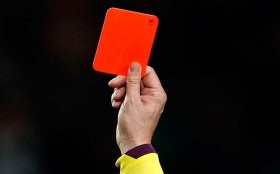Sadly an email sent is rarely if ever deleted. There is always someone somewhere who will have kept a copy and produce it just when you least expected.
Yes, in Outlook you can recall an email. However as soon as one sees that recall message I defy anyone not to be tempted to open the offending email!
Here are a few recent email scandals where the sender is probably bitterly regretting they ever sent the original email.

Email regrets
There is nothing new about emails you wish you had never sent. It is that somehow we never seem to learn good email etiquette and that email sent, is an email kept for life. Within everyday business you can take three easy steps to reduce the risk of creating an email scandal.
1. Resist hitting Reply All – check who is in the To and CC address box and make sure you are sending it to the right people.
2. Think and re-read your email before hitting send. Ask yourself what if this turned up on the wrong person’s desk?
3. Practice the art of ‘slow email’. Write a rule to put every email into a holding pattern before it leaves your inbox.
For more suggestions see Mesmo Consultancy video on how the manage the risks of cyber crime and leaking confidential information.
How do you have a preferred way to manage these risks to ensure you have no regrets about the emails you send?
Tags: email etiquette, email scandals, Mesmo Consultancy, Recall email, Slow email
Five years ago the CBI complained school leaver’s low level of literacy skills. More recently poor English skills have been cited as more damaging to business than the digital divide. Poorly structured emails, and especially long rambling ones remain the bane of many people’s lives and particularly those who pick up their emails on mobile devices and/or suffering from chronic email overload.
‘Pen your Email in Simple Language’ is the seventh commandment of our Smart Email Management charter but clearly an aspect of email etiquette which is frequently ignored. Yet it save times and reduces the potential for misunderstanding. If you do not receive a response to an email, it is often not so much because the recipient is busy but because you have written it poorly.

George Orwell
from www.counter-currents.com
George Orwell laid out six rules for effective writing, which have served many authors.
These rules are as relevant now as when he wrote them over sixty years ago. In the digital age I add a seventh rule – start an email with a one sentence executive summary of what the email is about and what action is expected.
What email etiquette tips can you offer for ensuring you send the right message right first time by penning your email in plain language?
Tags: CBI, Counter Currents, email etiquette, email management, George Orwell

Email PEARLS for brilliant email etiquette
Are your emails PEARLS designed to send the right message right first time or lead balloons which might lead to an impending email disaster?
PEARLS are good corporate email etiquette and will enhance your digital dress code just like real ones can add a touch of glamour to anything from jeans to haute couture.
Click here to check your email etiquette.
Tags: corporate email etiquette, email etiquette, Email PERALS
A mixed bag including email etiquette, cyber security (as always), the changing face of the consumer experience and time management.
Do any of these topics raise warning bells for you and your organisation? Call us now to hear how we have helped organizations like yours tackle such challenges and improve productivity and well-being.
Tags: Articles of note, cyber crime, email etiquette, Productivity, well being
‘People don’t read my emails’. This is one of most frequently cited sources annoyance. It begs the question who is to blame? The sender for poor email etiquette and not writing in such a way as to make it easy for the recipient to know either what you want or by when. Alternatively, is it the recipient who probably has 50+ unread emails in their inbox and just missed yours. Senders always blame the recipient’s for poor email etiquette and inbox management. Recipients always say they can instantly spot important emails regardless of how many are in their inbox!

Red email etiquette
In life, it is always important to make sure we manage and have control over what is within our power to do so. With email, this means how we write and signpost our emails. Do you include a priority marker? This is downright rude and nine out of ten times your email will be given a red card. After all we all hate aggressive behaviour. Instead take the assertive approach and at the end of the subject-line add ‘action by ….’
Bearing in mind that many people read their emails on a mobile device, they often don’t see past the first sentence. If they are reading emails on a full size PC, they may also be time poor. A rambling email can therefore easily be given a yellow card and parked for later reading.
Whereas emails written in newspaper style and which in the first sentence tell the reader what the email is about will get a blue card and be dealt with promptly.
Other aspects of:
Click here to further referee your email etiquette and what colour card the recipient might assign to your emails and hence whether or not it will be answered in a timely and proper manner.
See Brilliant Email: how to win back time and increase your productivity by Monica Seeley for more tips on how to capture and maintain recipient’s attention.
Tags: Blue email, Brilliant Email, Email colour, email etiquette, Monica Seeley, Red email, Yellow email